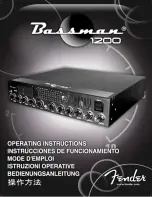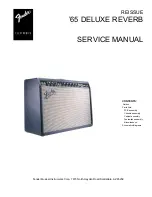
15
Technically Speaking
Balanced and Unbalanced Interconnects
Recording and broadcast studios use balanced connections exclusively because of their inherent ability
to reject noise and hum, thus assuring the best sound. Certain high-quality preamplifiers and surround
controllers built for residential use utilize balanced connections with XLR jacks for the same reasons. As with
other Parasound Halo series power amplifiers the JC 1+ is equipped with an XLR balanced input connector
so you can take full advantage of its inherent noise reduction capability and superior sound quality.
Unbalanced connections with RCA jacks are found on all home audio equipment. RCA jacks use two-
conductor wires are less costly than the additional circuitry, higher priced XLR connectors and three-
conductor differential balanced circuitry required for balanced connections.
In an unbalanced line, the positive audio signal is conducted through the center pin of an RCA plug and
RCA jack while the negative signal is on the outer shield wire, which also functions as the ground connection.
Unbalanced interconnect cables are vulnerable to hum from an AC line or other electrical noise, such as
broadcast RF (Radio Frequency), which can be reproduced through your loudspeakers. Since the unbalanced
line’s ground also carries the audio signal, there is no way for the amplifier or preamplifier to distinguish
between the audio signals you want and noise emanating from external sources.
Balanced lines are superior at rejecting noise because they utilize separate conductors for the audio and
the ground: two inner conductors carry the positive and negative audio signal, and a third outer wire connects
the grounds and also shields the two signal conductors from interference. When the positive and negative
signals appear at the component receiving the signal they are equal, but 180 degrees out of phase with each
other relative to ground. Balanced signals require special differential circuitry to conduct separate plus and
minus audio signals.
A differential input circuit amplifies only the difference between the positive and negative signals. For
example, when a 1 Volt audio signal arrives at a balanced input stage, the differential input “sees” a positive
+1 Volt minus a negative -1 Volt, or 2 Volts total. External hum and noise that somehow gets into a balanced
line is common to both its positive and negative conductors with respect to ground. Therefore, it is canceled
or rejected in a differential input circuit.
This phenomenon of rejecting noise signals common to both positive and negative conductors is called
common mode rejection. Differential inputs are specified according to how well they reject signals common to
both conductors. This is measured in dB and is called the common mode rejection ratio or CMRR.
Eliminating Hum and Buzz – Ground and Ground Loops
Audible hum and buzzing noises in a system are usually related to issues with the component grounds.
Ground (sometimes called “common”) is a point of reference for voltages in virtually all audio and video
components. Ground is supposed to remain at zero volts while the audio signal voltage swings positive
(voltage above ground) and negative (voltage below ground). If ground isn’t at zero, there can be an audible
60
Hz hum (or 50
Hz hum in regions with 50
Hz AC). The harmonics of these frequencies (120
Hz, 240
Hz, 480
Hz or 100
Hz, 200
Hz, 400
Hz) may add a raspy “buzzing” noise to the hum. The most common cause of a
ground loop in an audio system is from cable TV. If disconnecting the cable line stops the hum then you
might need a cable TV ground loop isolator.
The ideal of zero voltage ground in and between every component in an audio system is practically
impossible, because some resistance exists between the ground points of different components is inevitable.
By keeping components close together with short interconnects and their power cords plugged into a common
AC outlet or power strip, you’ll avoid noise problems created by resistance in the house electrical wiring.
Hum and buzz is also caused when unwanted voltage flows through multiple component ground points
called ground loops. Here are three tips to avoid ground loops:
1
. Your Cable TV or Satellite receiver box might require a Cable TV Ground Isolator.
2
. Use balanced input cables with your Parasound JC 1+. (See Balanced & Unbalanced Lines in this section).
3
. When rack mounting, always use the insulated “shoulder” washers on both the front and rear sides of the
metal rack mount before bolting it to the equipment rack rails. These insulating washers interrupt the ground
loops caused by metal-to-metal contact between the rack, the components, and their rack-mount bolts. Extra
insulating washers are available from any manufacturer of audio racks.
Содержание HALO JC 1+
Страница 1: ...JC 1 Mono Power Amplifier OWNER S GUIDE ...
Страница 6: ...6 ...
Страница 7: ...7 ...
Страница 21: ...21 Chassis Illustration and Dimensions ...
Страница 23: ...23 ...
Страница 24: ...24 Parasound Products Inc 2250 McKinnon Ave San Francisco CA 94124 415 397 7100 www parasound com ...










































